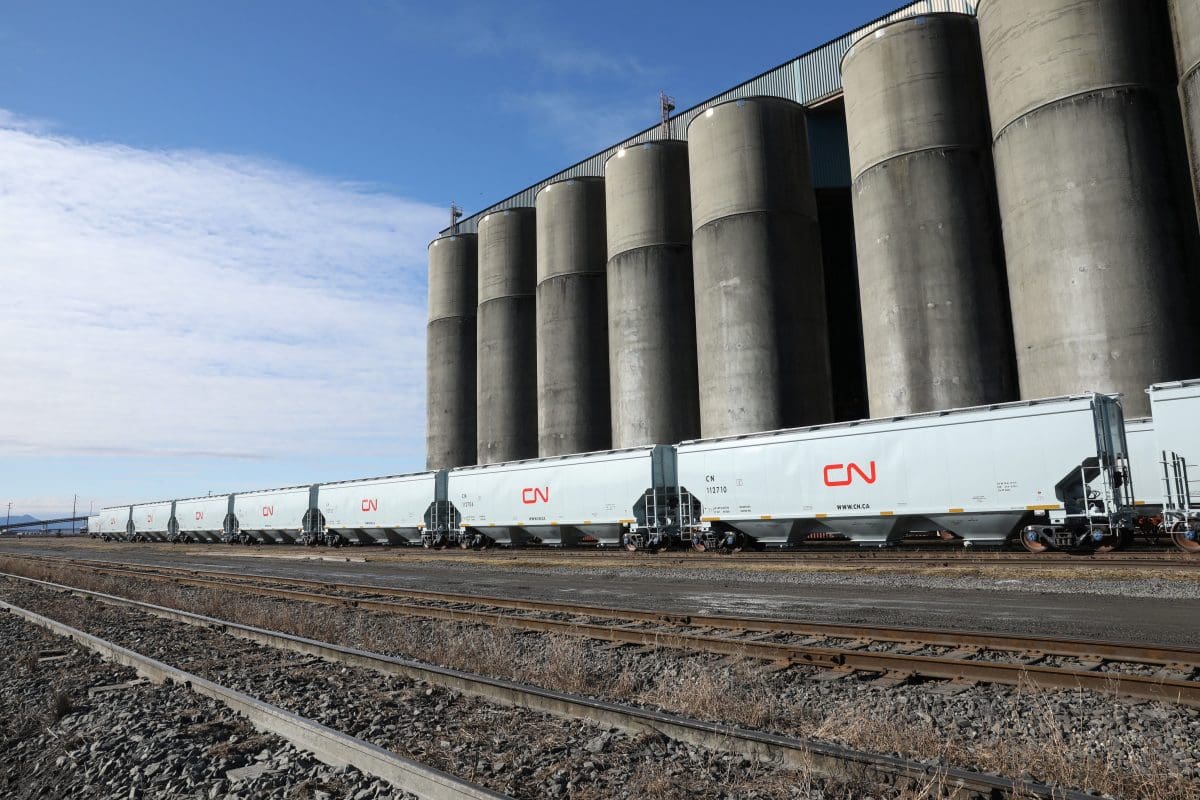
Canadian National last month ordered 1150 new cars to an Ontario company to boost its capacity to transport grain. Photo: Canadian National
CANADIAN farmers are on track to bag their second-biggest wheat crop on record according to Statistics Canada, which released its first 2020-21 production estimates last week. Output of wheat, barley, oats and corn are all predicted to increase this year compared to last, with canola and soybean output falling.
Canada’s national statistics agency compiled the production data using yield models based on satellite imagery instead of the standard grower survey. Significant advances in the accuracy of satellite modelling made this possible, but it was also adopted to reduce the stress on farmers during the coronavirus pandemic.
The agency called total wheat production 35.74 million tonnes (Mt), an increase of 10.5 per cent on last season, and second only to the 37.59Mt crop harvested in 2013. This increase is a result of a higher harvested
area, up 2.3pc to 9.87M hectares, and higher forecast yields, up 8pc to 3.65t/ha compared to 2019.
Barley production was pegged at 10.55Mt, a year-on-year increase of 1.6pc, but well below the country’s record barley harvest of 15.56Mt way back in 1996. The growth was driven by a 1.3pc increase in yield
to 3.86t/ha off a harvested area of 2.75Mha, 0.3pc higher than in 2019.
An increase of 6.3pc in the harvested area was the primary driver behind the projected growth in oats production of 6.1pc to 4.5Mt. The season’s yield projection is 0.2pc lower at 3.4t/ha.
Canada is the world’s largest canola producer, and the oilseed is the second-largest crop grown in Canada each year. National production is expected to decline by 0.4pc to 19.4Mt this harvest compared to the
2019-20 crop, which was revised upwards from 18.65Mt to 19.48Mt.
This year’s canola yield is forecast to increase by 1.2pc to 2.33t/ha, but this is more than offset by a harvested area that is expected to decrease by 1.6pc to 8.34Mha.
The two biggest pulse crops in Canada are field peas and lentils, and Statistics Canada yield models have production 17.9pc and 25.1pc higher at 5Mt and 2.81Mt respectively.
In the row-crop space, the Statistics Canada report is projecting an increase in corn output, but the soybean crop is tipped to edge lower. The corn crop was pegged at 13.93Mt, 3.9pc higher than in 2019, and soybean production was pencilled in at 5.96Mt, 1.4pc lower than the previous season.
Big end to export year
Canadian grain exports may have started slowly but they finished the 2019-20 marketing year with a bang. This resulted in a reduction in wheat, canola, field peas and lentil stocks as at 31 July compared to the same time last year. Barley and oat stocks bucked the trend, finishing higher year on year.
Disruptions in the rail network slowed the movement of grain to Canadian ports early in the marketing year, delaying the export program. However, reduced demand for petroleum and consumer goods as a result of the COVID-19 pandemic in the second half of the season freed rail capacity to move more grain to port, resulting in record grain shipments in late spring and over the summer period.
Western Canada’s commercial grain-handling system is very different to Australia’s. It simply does not have the capacity to store the entire crop at harvest. More than 70pc of the annual harvest is stored on farm,
predominantly in steel upright silos. The very low ambient temperatures eliminate storage pests over winter.
The capacity of the on-farm storage system in Canada is more than 75Mt, or 90-120pc of annual production, depending on the crop size. By contrast, on-farm storage capacity in Australia is around 15Mt.
Canadian supply chains generally operate a “pull” delivery system where grain is moved from farm to a receival site and then to a port, just in time for the arrival and loading of export vessels. Australia’s export supply chain mainly functions as a “push” system where grain is moved from farm to up-country or port storage facilities immediately after harvest and stored in readiness for the arrival of export vessels.
Of the grain exported from Canada, 75pc travels long distances by rail from the prairie provinces to the two main west-coast ports. Journeys of 1300-1800 kilometres are commonplace. Canada’s oil and mineral
fields are close to agricultural areas, so there is competition for rail-network capacity. By contrast, grain destined for export from Australia travels relatively short distances to port with journeys greater than 400km uncommon.
Harvest under way
The Canadian harvest has commenced, but it is in its infancy. While swathing of canola is under way in many regions, not much harvesting has occurred as yet. And the jury is out on how badly yields were trimmed by the unseasonal heat and a lack of finishing moisture in some districts through August.
Weather forecasters say Canadian farmers are in for a more benign autumn than last year, which should help calm the harvest nerves. The potential formation of a weak La Niña weather system should prevent a
recurrence of last year’s wet harvest nightmare for the majority of the winter-crop area.
With higher production comes a bigger exportable surplus. USDA has Canadian wheat exports pencilled in at 24.5Mt based on its crop estimate of 34Mt. That is much lower than the Statistics Canada number, and
many on the ground in the Prairies are calling wheat production even higher at more than 37Mt.
Add to that the Russian wheat crop, which has suddenly gone from maybe 78Mt to more than 82Mt and getting bigger. The northern hemisphere is making wheat faster than the southern hemisphere is losing it at the moment, and this only adds to exportable surpluses and competition for new-crop Australian exporters.

HAVE YOUR SAY